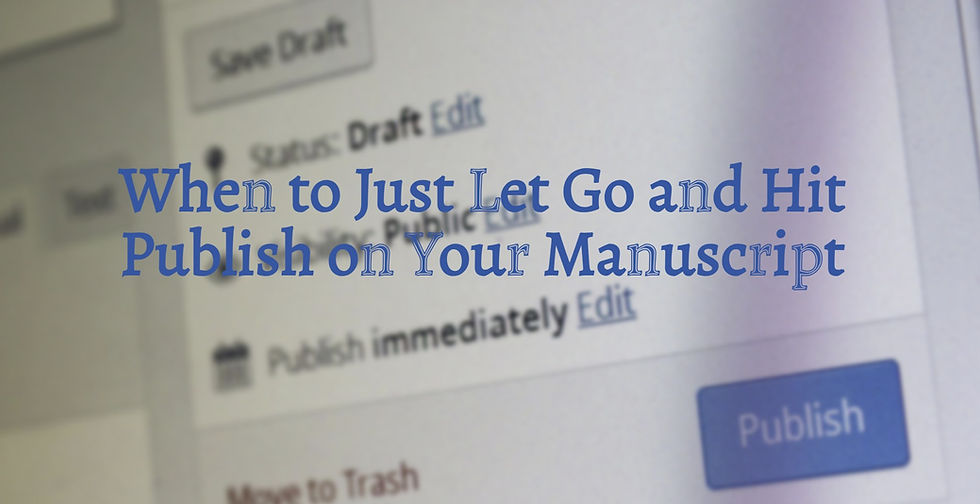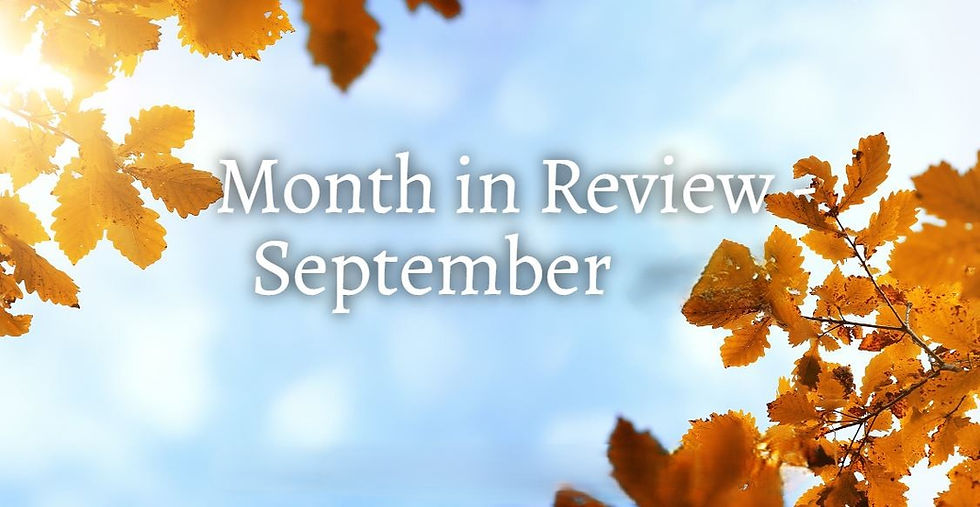When to Just Let Go and Hit Publish on Your Manuscript
- apiperburgi
- Jul 23
- 4 min read

When you're deep into writing, it can feel like your manuscript will never be "good enough." The editing phase often spirals into endless revisions, constant rephrasing, and nagging self-doubt. So, how do you know it's the right time to stop editing and finally hit that publish button?
In this post, we’ll explore how to recognize when it's time to let go of your manuscript. Every writer experiences that moment when editing shifts into over-editing. Let’s tackle that together.
Recognizing the Signs of Over-Editing
Over-editing is a common pitfall for writers, often rooted in self-doubt or an endless pursuit of perfection. If you find yourself constantly tinkering, you may be delaying your progress. Here are some tell-tale signs that indicate it’s time to stop editing:
You've Crossed the Line from Editing to Obsessing
If you catch yourself reading the same paragraph multiple times, trying to tweak every word, it’s a warning sign. For instance, if you’ve changed "delighted" to "thrilled" and back again, you might be losing touch with your original vision. It’s crucial to step back when obsessive editing kicks in.
You’ve Committed to Multiple Revisions
Many writers go through at least three drafts. If you notice your major plot points or character arcs remain unchanged after several revisions, you've probably done enough. Research shows that writers often find themselves caught in a cycle of revisions, yet many successful novels undergo fewer than five drafts before publication.
Feedback is Often the Same
Sharing your manuscript with beta readers can offer valuable insights. If the feedback remains consistent after several rounds, it’s a signal that your manuscript is closer to being finished. For example, if three different readers comment on how they love the character's journey, further changes may only complicate things.
You Are Just Making Changes for the Sake of Change
If your edits are cosmetic—like swapping adjectives or rephrasing sentences—ask yourself: are these edits genuinely enhancing your story? Valuable changes should address deeper narrative issues, not just surface-level tweaks.
Your Deadline is Approaching
External deadlines can help curb over-editing. Setting a publication date, even if it’s self-imposed, can motivate you to wrap things up. Writers who set specific deadlines are statistically more likely to finish their projects than those who do not.
Setting Clear Goals for Your Edits
Establishing clear objectives for each editing session can help you make better decisions about your manuscript. Well-defined goals can guide your revisions and signal when you've reached the finish line:
Identify Specific Areas of Focus
Before each editing round, pinpoint what you'll concentrate on—be it plot structure, character development, or dialogue. For instance, focus on ensuring your characters have distinct and authentic voices instead of rechecking the wording alone.
Use a Check List
Create a checklist to track the elements you want to improve. When you can confidently check off all your goals, it might be a good time to consider hitting publish. This structured approach allows you to see your progress and offers satisfaction as you complete tasks.
Trusting Your Gut Feeling
Trusting your instincts can be one of the hardest parts of the editing process. Here are some tips to help you leverage that gut intuition:
Read It Out Loud
Hearing your manuscript read aloud can highlight areas that flow well and those that don't. If the story feels right when you read it aloud, it's likely ready for others.
Create Distance
Set your work aside for a few days or weeks. Coming back with fresh eyes can reveal if it reads well without tweaks. Often, a little time apart can clarify your thoughts.
Listen to Your Readers
Positive feedback from trusted readers is a strong signal that you've struck the right chord. For example, if multiple readers express excitement about a particular scene or theme, that’s an indication you’re on the right path.
Embracing Imperfection
No manuscript is perfect, and that’s completely okay. Accepting that your work will have flaws can be liberating. Here’s how to embrace imperfection:
Acknowledge That Feedback is Subjective
Everyone has different tastes and opinions. You can't please everyone, and critics will always exist. By getting your work out into the world, you provide an opportunity to connect with your target audience, who will appreciate your unique voice.
Focus on Your Growth
Each manuscript contributes to your journey as a writer. No one sees your early drafts but you. Every revision helps you refine your voice and style.
Think of It as a Journey
Publishing your work isn’t the finish line—it’s just one milestone in your writing journey. Once your manuscript is in the world, you can continue growing, learning, and evolving.
The Final Push
Deciding when to stop editing your manuscript and hit publish can be daunting. By recognizing the signs of over-editing, setting clear goals, trusting your instincts, and embracing imperfection, you can overcome self-doubt and insecurity.
Every good writer has faced this moment. Don’t let fear hold you back. Your story deserves to be told, and the world is ready for it. So, when you feel confident, trust yourself—and when the time is right, hit that publish button!
Happy writing!
Piper is the award-winning author of The Country Girl Empress series. When she isn't busy typing on her computer, she can be found chasing after her furry children or holding on tightly to a good cup of coffee. Follow her on LinkedIn, Facebook, Medium, and Goodreads.








Comments